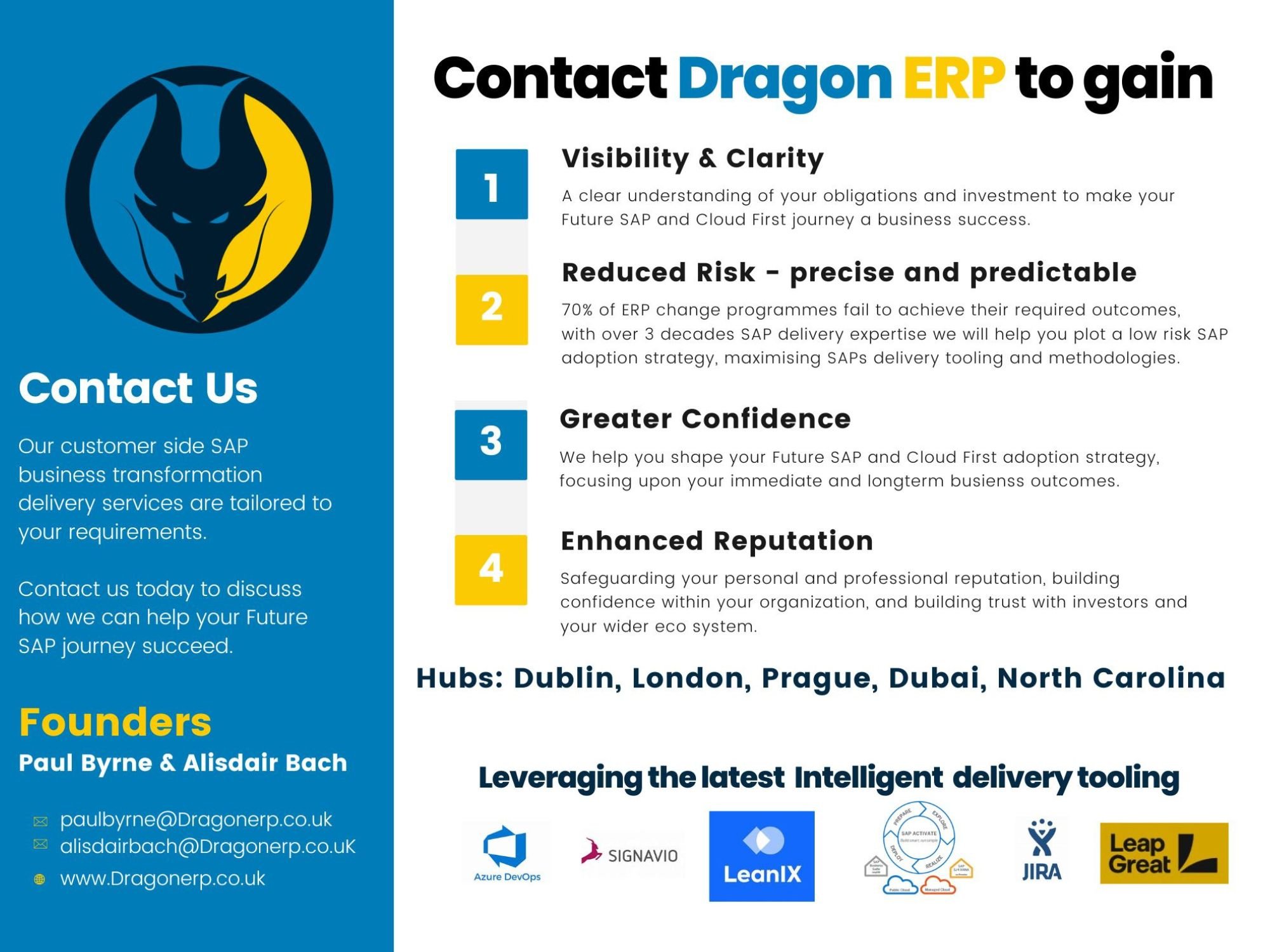Process Controls and SAP
Dragon ERP - Our AI SAP implementation tooling takes the risk out of your Process Controls
What is a Process Control Framework and how does SAP enable it, the second in our series of CFO blogs.
Firstly What is a Process Control Framework?
A Process Control Framework is a structured approach to ensure that an organization’s business processes are designed, implemented, monitored, and maintained to achieve operational efficiency, regulatory compliance, and risk management. It establishes standardized procedures, accountability, and mechanisms to monitor and correct deviations from desired outcomes.
Key components of a process control framework include:
1. Process Design: Defining and documenting business processes and controls.
2. Risk Assessment: Identifying risks associated with processes and controls.
3. Control Implementation: Establishing controls to mitigate risks.
4. Monitoring and Testing: Regularly evaluating control effectiveness.
5. Issue Resolution: Addressing deficiencies and non-compliance.
6. Reporting: Documenting and communicating process performance to stakeholders.
This framework is essential for organizations aiming for compliance with regulations such as SOX, ISO standards, or industry-specific rules.
How Does SAP Enable a Process Control Framework?
SAP offers tools such as SAP Process Control (part of the SAP Governance, Risk, and Compliance suite) to support the implementation and management of a process control framework. Here’s how SAP enables it:
1. Control Design and Documentation
• SAP provides tools to define and document internal controls, risks, and related processes.
• Templates for common control activities reduce setup time and standardize documentation.
• Integration with ERP systems ensures that business processes align with established controls.
2. Automation of Controls
• Automates repetitive tasks, such as reconciliation and validation, reducing manual errors.
• Continuous monitoring of controls ensures real-time oversight and compliance.
• Examples of automated controls include segregation of duties enforcement and system access checks.
3. Risk Assessment and Monitoring
• Risk libraries and assessment tools in SAP Process Control help organizations identify, evaluate, and prioritize risks.
• Real-time dashboards provide visibility into high-risk areas and potential control weaknesses.
4. Control Testing and Monitoring
• SAP Process Control allows for automated testing of control effectiveness.
• Control exceptions or deviations are flagged for immediate action.
• Regular assessments and audits can be scheduled and tracked within the system.
5. Reporting and Documentation
• Centralized reporting consolidates data on control performance and compliance status.
• Predefined SOX-compliant reporting templates streamline the creation of audit-ready reports.
• Document management features ensure proper versioning and retention of compliance-related records.
6. Integration with Other SAP Modules
• SAP Process Control integrates seamlessly with other SAP solutions (e.g., SAP Risk Management, SAP ERP, and SAP S/4HANA).
• This integration ensures that financial, operational, and compliance data are interconnected, providing a holistic view of risks and controls.
7. Issue Management and Remediation
• Identified control deficiencies are tracked and managed through a centralized system.
• SAP tools help assign responsibilities, monitor remediation progress, and ensure timely resolution.
8. Continuous Improvement
• Analytics and machine learning in SAP solutions provide insights into control performance trends.
• Organizations can adapt and refine their control frameworks based on evolving risks and regulatory requirements.
Key Benefits of Using SAP for a Process Control Framework
• Enhanced operational efficiency through automation.
• Real-time monitoring and reporting reduce compliance risks.
• Scalable and adaptable for global or industry-specific compliance needs.
• Improved audit readiness with centralized data and pre-configured templates.
SAP’s tools not only help organizations implement robust process control frameworks but also ensure that these frameworks evolve with changing business and regulatory landscapes.
If you need help shaping your Target Finance Operating Model, then contact a Dragon……
Paul and Alisdair at a SAP Partner day


